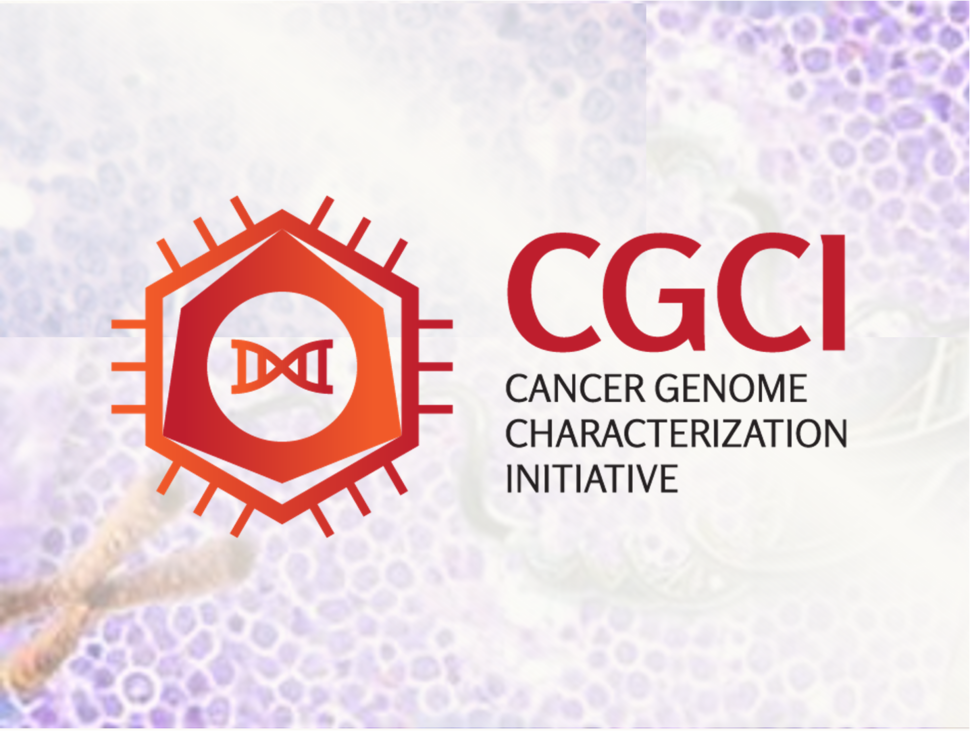OCG’s Efforts in the Discovery and Validation of Tissue Samples for the HIV+ Tumor Molecular Characterization Project (HTMCP)
, by Nicholas Griner, Ph.D.
The success of antiretroviral therapy and prevention education has led to a dramatic decrease in new HIV (human immunodeficiency virus) positive cases in the United States (U.S.) since the 1980s. The HIV+ patients, who have been successfully treated for AIDS (acquired immunodeficiency syndrome), are now reaching the stage in their lives when cancer incidence increases. Understanding the mechanisms of how AIDS-defining cancers arise in patients is critical in the treatment of these patients.
Epidemiology studies found that AIDS-defining cancer rates have remained steady since the early 2000s. Early detection of cancer has greatly improved the prognosis of HIV+ patients with cancer. Many HIV+ patients who present with malignancies are prescribed chemotherapy and other tumor treatment regimens that damage the DNA of the tumor cells. When these tissues are used for genomic/transcriptomic sequencing, the genetic somatic aberrations present in the tumor prior to treatment as well as those arising from chemotherapies make the former hard to identify.
The HIV+ Tumor Molecular Characterization Project (HTMCP) is a joint effort by the Office of Cancer Genomics (OCG) and the Office of HIV and AIDS Malignancy (OHAM) to identify, accrue, and fully characterize common malignancies that occur in patients who were previously treated with antiretroviral therapy because they were HIV+. HTMCP studies the most common malignancies associated with HIV including diffuse large B-cell lymphoma (DLBCL), cervical cancer, and non-small cell lung cancer (NSCLC). HTMCP requires cooperation between multiple participating sites to identify, acquire, and process tissues for molecular characterization as these tumors are relatively rare. Since 2012, a large majority of samples acquired for HTMCP have originated from Sub-Saharan Africa, specifically, the Uganda Cancer Institute (UCI) (see e-News: Issue 13).
Because genetic risk-factors can influence the development and/or progression of cancers among the different populations around the world, the project characterizes tumors which develop in cancer patients with and without a history of HIV infection. The diagnosis of each tumor is confirmed by a group of expert pathologists who work together to achieve consensus. Once diagnosis is confirmed, the tumor and normal tissues are processed into nucleic acids and fully molecularly characterized by whole genome and whole transcriptome sequencing. The sample processing is done by a single site to reduce technical variability of sequencing due to protocol variability. The clinical data is collected from each patient at the time of diagnosis and one- and two-year follow-up, if available.
Within the Cancer Genome Characterization Initiative (CGCI) projects, the process of tissue accrual for some cancers present more challenges than others. The accrual of DLBCL and NSCLC have proven much more difficult than that of cervical cancer. For example, some tissue sites are challenged with pathological diagnosis while others are challenged with inadequate sample amount since tissue samples were collected with fine needle biopsies. It is important that the amount of tissue removed for pathological diagnosis is sufficient for the projects’ needs as the prescribed chemotherapy will lead to damaged genetic material, eliminating the option of additional biopsy. Tissue biopsy methods have also changed as technology continues to improve. Fine needle biopsies allow clinical centers to perform minimally invasive procedures to remove malignant tissue for analysis. However, the amount of tissue removed from the biopsies is generally much less than the amount needed for the project’s whole genome/transcriptome sequencing. An additional challenge is obtaining detailed clinical data information of the patient receiving treatment. This clinical data and subsequent follow-up data is critical to the project in comparing molecular data from patients with both differing genetic and treatment backgrounds.
In order to address some of these challenges, OCG established standard operating procedures (SOPs) with the help of OHAM. The SOPs were updated when it was clear that certain tissue source sites (TSSs) in different countries could not provide fresh frozen tissues and could not perform pathology analyses to the extent possible in the U.S. In addition, OCG worked with certain TSSs that already had a study protocol in place to adapt the project requirements to optimize the tissue accrual process for the HTMCP. Furthermore, the AIDS Malignancy Consortium (AMC) has protocols for clinical trials and tissue procurement to address these challenges. The AMC represents a group of hospitals, universities, clinicians, and researchers who are investigating new treatments and prevention interventions for malignancies in people living with HIV. One protocol, AMC-083, was started in 2012 concurrently with HTMCP, and represents AMC’s efforts to accrue and contribute tissues for molecular characterization. There are currently 11 TSSs within the U.S. who activated this protocol and are currently active in accruing tissues for this study. The Emmes Corporation coordinates with different TSSs in the accrual of both tissues and clinical data for AMC-083. To date, AMC-083 has accrued a number of cases which match the HTMCP requirements and continues to identify more. Additional AMC TSSs are being investigated for case accruals, including international sites. Both DLBCL and NSCLC projects are accruing cases from Africa and the U.S. while adapting protocol specifics so as to optimize case accruals without sacrificing data quality.
As a result of all the hard work of team members involved in the projects over the past six years, HTMCP has recently achieved its goal of acquiring 100 UCI cervical cancer cases that are currently undergoing molecular characterization and analyses. The OCG was successful in accruing and fully molecularly characterizing an initial cohort of DLBCL and NSCLC cases and continues to search for additional sites which can donate cases that match the project requirements. OCG will continue to work closely with the AMC to accrue sufficient cases and publish results of molecular characterization of DLBCL and NSCLC cases similar to the completed cervical cancer portion of HTMCP.
